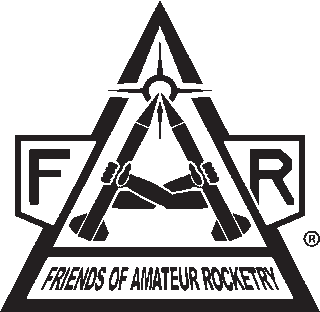FAR does not supply LOX, helium, methane, or LNG.
FAR will supply an LNG Dewar for your team use. Each team must buy and pick up their own LNG at: Fontana Truck Stop Center Inc. Please utilize the Friday night before to go to FAR Site to pick up the Dewar and go to Fontana to get the LNG. The truck stop is open 24-Hours.
To get LOX, helium, and nitrogen; each team will need to contact Linde well in advance to arrange an account for delivery to FAR Site.
FAR/Mars Society Launch Contest registration is still open.
Teams that have signed up to compete are required to static fire their full-up rocket and turned in thrust data 30-days prior to their competition launch date.
FAR/Mars Society Launch Contest
MOJAVE, CA – Student-built rockets will streak into the stratosphere in Spring, 2018 as college and university engineering teams from around the world compete for $100,000 in prizes in a contest sponsored jointly by the Mars Society, headquartered in Denver, CO and the California-based Friends of Amateur Rocketry (FAR), officers announced today.
The FAR-MARS Prize will grant $50,000 to the team whose bi-propellant liquid-fueled rocket comes closest to reaching 45,000 feet (13,716 meters). A second $50,000 prize will go to the team that comes closest to hitting that same altitude with a rocket-powered by liquid-methane and liquid-oxygen, announced Robert Zubrin, president of the Mars Society, and Mark Holthaus, director and treasurer of FAR. “If one team can achieve both goals with the same rocket, they’ll win both prizes totaling $100,000,” Holthaus said.
The contest launch window will commence Saturday, May 5, 2018, the 57th anniversary of the launch of Alan Shepard, America’s first man in space, and continue through Sunday, May 13, according to Holthaus and Zubrin. The goal of being the closest to 45,000 feet, rather than simply reaching the highest altitude, was chosen so teams would have to demonstrate the precise control required to create reusable launch vehicles, Holthaus said.
“We see this as a logical follow-on to the Orteig Prize of the 1920's that sparked aviation, and the X Prize of the 2000's that jump-started commercial spaceflight,” said Zubrin, founder of the Mars Society and author of the book The Case For Mars, which proposed the Mars Direct manned missions that radically changed ideas about the feasibility of interplanetary space travel in the 1990's. “We’re looking to get college and university students fired up about rocketry, which is the key to space travel and making humanity a multi-planetary species.”
Funds for the prize have been provided by an anonymous donor whose goal is to advance Science, Technology, Engineering, and Mathematics (STEM) education in general and human spaceflight specifically, Holthaus and Zubrin said.
The $50,000 for each part of the prize will be presented to the college or university sponsoring the winning team, to be used for scholarships for students in the STEM fields related to rocketry.
Teams will have about 15 months to design, build, and test their rockets before gathering at the FAR rocket launch complex called FAR Site, located North of Edwards Air Force Base, on May 5, 2018. “Each competing rocket must loft a 2.2 pound (one-kilogram) payload, containing an altitude tracking device, to the target altitude,” Holthaus said. “The payload will be supplied by FAR, rockets must be recovered by parachute, and these rockets are required to clear 30,000 feet (9,144 meters) as a minimum to qualify.” The competition will continue over two weekends (May 5-6 and 12-13) if needed, Holthaus noted.
FAR Site is equipped with static engine test stands and rocket launch rails so competing teams can try out their engines and rockets and tweak their performance pre-competition, Holthaus added.
Competing teams must be composed of college or university students, with at least one faculty adviser providing guidance, Holthaus said. Teams from the United States and all other nations are encouraged to enter and compete; two or more institutions can combine students, faculty, and resources for a single entry.
“We see the ability to design, build, and test bi-propellant liquid-fueled rockets as a key career skill in the coming decades, with a host of new, innovative rocket companies such as SpaceX, Blue Origin and Orbital ATK taking spaceflight in entirely new directions,” Zubrin said. “Using methane as a fuel is a critical component for missions to the planet Mars, as it is easy to create liquid-methane out of the resources already available on that world.”
Details on how to enter the contest and the exact rules for the competition will be posted on the Mars Society and FAR websites.
The Mars Society is the world's largest and most influential space advocacy organization dedicated to the human exploration and settlement of the planet Mars. Established by Dr. Robert Zubrin and others in 1998, the group works to educate the public, the media and government on the benefits of exploring Mars and creating a permanent human presence on the Red Planet.
Friends of Amateur Rocketry, formed in 2003 by amateur rocketry enthusiasts, whose mission is to educate the public in STEM fields through the use of amateur rocketry; and to foster rocket technology by supporting individuals, hobbyists, student groups, businesses, and other like-minded non-profit entities. Both The Mars Society and Friends of Amateur Rocketry are 501(c)(3) non-profit organizations.
